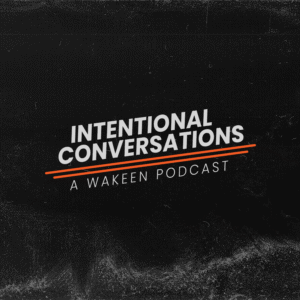If you’re a marketing manager you’ve likely been asked the question “Why isn’t our company showing up in search” or “Why are our local competitors showing up first?” Or maybe you’re a business owner wondering this for yourself.
A key piece of the holistic marketing and communications plan puzzle is Search Engine Optimization (SEO). This is not just a fancy marketing buzzword (even though we love acronyms), it is an important practice, that provides your business with increased visibility, positions you as an authority, and gives new or existing audiences valuable ways to engage with your brand.
Creating content isn’t just about producing words—it’s about optimizing your content for search engines to ensure it reaches your target audience effectively. Whether you’re running a business blog or managing a website, implementing solid SEO practices is key to driving traffic and engagement.
Here are five essential SEO tips to help you craft content that not only ranks well but also resonates with your audience:
1. Conduct Thorough Keyword Research
Keyword research forms the foundation of any successful SEO strategy. By identifying the right keywords, you can better understand what your audience is searching for and tailor your content accordingly. Start by brainstorming topics related to your niche, then use tools like Google Keyword Planner, SEMrush, or Ahrefs to discover relevant keywords with high search volume and low competition.
Once you’ve compiled a list of target keywords, integrate them naturally into your content. Include them in your titles, headings, meta descriptions, and body paragraphs, but avoid keyword stuffing, which can harm your rankings. Instead, focus on creating valuable, informative content that addresses the needs and interests of your readers while incorporating your target keywords strategically.
2. Focus on Quality and Relevance
In the realm of SEO, quality always trumps quantity. Your content should be well-written, informative, and relevant to your target audience. Instead of churning out generic posts to fill your blog, focus on creating in-depth, authoritative content that provides real value to your readers. Consider conducting competitor research to identify gaps in the market and opportunities to differentiate your website.
When crafting your landing pages, put yourself in the shoes of your audience. What questions are they asking? What problems are they facing? By addressing these pain points and providing actionable solutions, you can establish yourself as a trusted resource in your niche and attract a loyal following.
Free Resource – Download our SEO Guide: Tips for Blog Writing
3. Optimize On-Page Elements
Optimizing your on-page elements is essential for maximizing your content’s visibility in search results. Site speed and mobile-friendliness are critical ranking factors. A slow website can frustrate users and lead to high bounce rates, negatively impacting your SEO.
Use tools like Google PageSpeed Insights to analyze and improve your site’s speed.
Additionally, ensure your website is mobile-friendly by using responsive design techniques, making sure it looks great and functions well on all devices
Pay close attention to your title tags, meta descriptions, headers, and URL structures. Your title tags and meta descriptions should accurately reflect the content of your page and include your target keywords to improve click-through rates.
Additionally, pay attention to your header tags (H1, H2, H3, etc.) to structure your content in a logical and organized manner. Use descriptive headings to break up your content and make it easier for both users and search engines to navigate. Finally, ensure your URLs are concise and descriptive, and include relevant keywords whenever possible.
4. Create Engaging Multimedia Content
Incorporating multimedia elements such as images, videos, and infographics can enhance the overall user experience and boost your content’s SEO performance. Visual media not only captures users’ attention but also helps to convey information more effectively than text alone. When adding multimedia elements to your content, be sure to optimize them for search engines by including descriptive filenames and alt text that incorporates your target keywords.
Furthermore, consider leveraging different types of content to cater to different learning styles and preferences. For example, you could create video tutorials, image galleries, or interactive infographics to engage your audience and provide valuable insights. By diversifying formats, you can appeal to a broader audience and increase your chances of ranking in various search results, including image and video searches.
5. Build Internal and External Links
Link building is a fundamental aspect of SEO that can significantly impact your website’s authority and visibility. Internal linking helps search engines understand the structure of your website and establishes relationships between different pages. By including relevant internal links within your content, you can guide users to related topics and improve navigation, ultimately enhancing the user experience.
Additionally, earning external backlinks from reputable websites in your industry can further boost your site’s authority and credibility. Focus on building relationships with other bloggers, influencers, and industry leaders, and create valuable, shareable content that naturally attracts links. Remember that quality always trumps quantity, so prioritize earning high-quality backlinks from authoritative sources and avoid toxic domains such as mass directories or ad-only sites.
Gaining Traction
By implementing these five essential SEO tips, you can create website and blog content that not only ranks well in search results but also resonates with your audience and drives meaningful engagement. Keep in mind that SEO is more of a long-term grind than an overnight sensation, so you’ll need to continually monitor and refine your SEO strategy to adapt to changing trends and algorithms.



